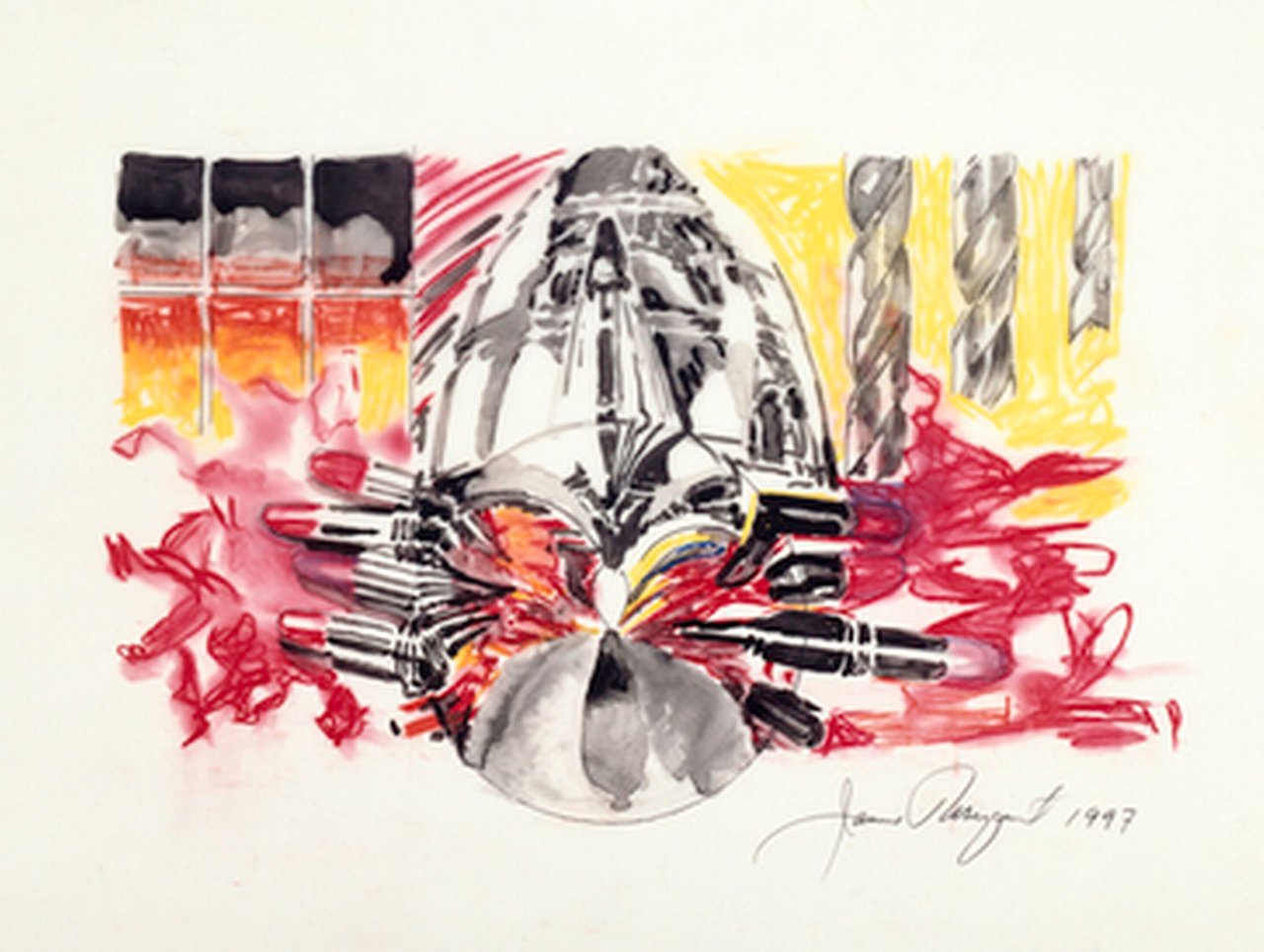Time Zones: James Rosenquist and Printmaking at the Millennium
Partnering for the first time with MOCA Jacksonville, this Deutsche Bank sponsored exhibition emphasizes the artist’s trademark exploration of new materials and printing techniques.
With the Deutsche Guggenheim commissioned project "The Swimmer in the Econo-mist" as a touchstone, "Time Zones" traces Rosenquist’s subsequent evolution and his translation of ideas and visual motifs across mediums.
James Rosenquist, born in 1933 in Grand Forks, North Dakota, is considered one of the leading American Pop artists. He was strongly influenced by his years as a billboard painter, notably from 1957-60, in the Midwest and New York. In the early sixties he developed his own form of mysterious pictorial combinations, painting fragments of advertising and commercial objects, and began working on a vast scale.1
Rosenquist’s monumental three-painting suite "The Swimmer in the Econo-mist" (1997-98) was specifically created for the Deutsche Guggenheim in Berlin at the change of the millennium and marked the beginning of the joint commissioning program between Deutsche Bank and the Solomon R. Guggenheim Museum. The 48-meter-long work wrapped around 3 walls of the gallery and its powerful color pulled the viewer into a swirling vortex of changing perspectives.
In 1989, Rosenquist visited Berlin not long after the fall of the Berlin Wall, where the great disparity between the former East and West zones was still palpable. Rosenquist noted, “I thought of a person struggling and working, like a swimmer in the fog, going somewhere, not knowing quite where [he or she is] going, but forcefully working, working, working.”3
Studies for his ideas were recorded in collage, pencil, oil pastel and ink drawings on paper and offer insight into the artist’s creative process. Deutsche Bank retained twelve of the studies Rosenquist made for the painting, seven of which are on view in this exhibition.
Dominant themes include industry and consumerism, the reunification of Germany and the turbulent nature of the economy as a whole. “Their whirling vortices are a visual metaphor for unrest: passing from black-and-white to vivid color, from abstraction to glimpses of realism, from the mundane to the extraterrestrial.”4 The painting also refers to the many wars that shaped the 20th century. One recognizes Picasso's Guernica as well as the colors of the German flag as a sunrise through the window. Although “The Swimmer in the Econo-mist” references some of the disastrous lessons of the past, the lithographs, paintings and drawings that accompany the exhibition also embrace great optimism and a progressive future.
To learn more about MOCA Jacksonville, please click here.
1 http://www.deutsche-guggenheim.de/e/pressephotos02.php
3 https://guggenheim.org/artwork/92
4 http://www.deutsche-guggenheim.de/e/pressephotos02.php

Artwork: James Rosenquist, "Study for The Swimmer in the Econo-mist (painting 1)," 1997. Deutsche Bank Collection. Photo: Courtesy of the Solomon R. Guggenheim Photo Archives, New York
